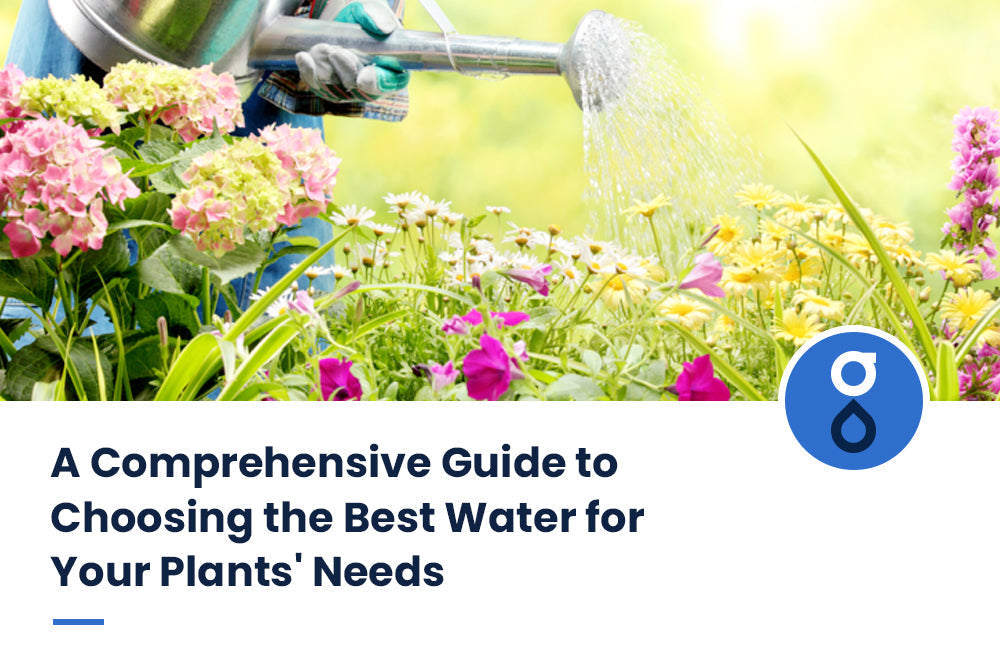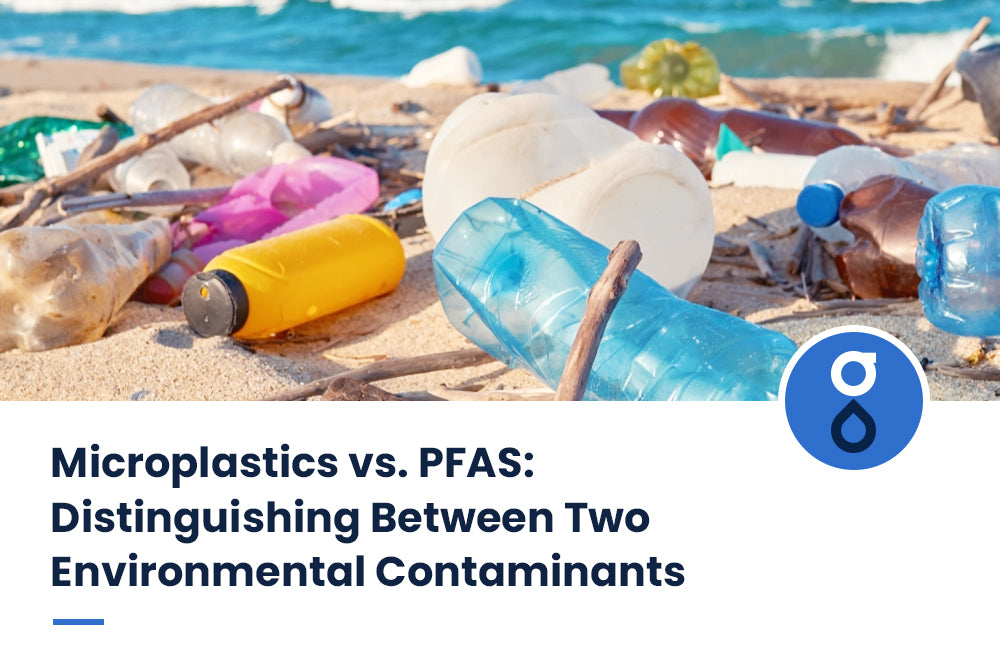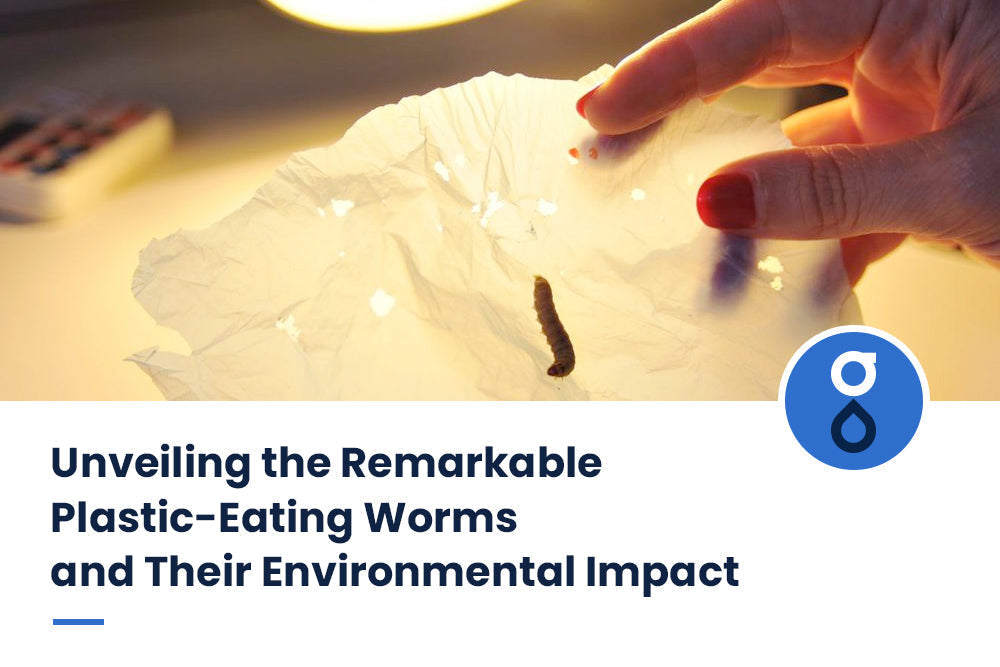Table of Contents:
Understanding plant water needs
Distilled water VS tap water
Rainwater VS filtered water
PH balance for maximum nutrient absorption
Choosing the right watering schedule
Tips when watering your plants
FAQs
Conclusion
When caring for your plants, one of the most important things you can do is ensure they get the correct type of water. The type of water you give your plants can make or break their health, so it's essential to understand the different types of water available and the best practices for watering your plants. This guide discusses the various types of water, how to test for pH balance, and determine the best watering schedule for your plants. Let's get started!
Understanding plant water needs

Different plants require different amounts of water depending on their species and the environment they are in. For instance, succulents and cacti need less water than other plants as they store water in their leaves and stems. On the other hand, plants that grow in areas with high humidity require more water than those in dry areas.
When watering your plants, it's essential to consider the type of soil they're planted in. Clay soils retain water longer than sandy soils, which drain quickly. Therefore, plants growing in clay soils require less frequent watering than sandy soils. Also, the size of the pot or container plays a role in determining the frequency of watering. Small pots dry out faster than large ones, so plants in small pots require more water than those in larger pots.
To ensure that your plants get the best water, consider the water's pH level. Most plants prefer slightly acidic water with a pH of 6.0 to 7.0. If the water you're using has a higher pH level, you can lower it by adding a few drops of vinegar or lemon juice. However, if the water is too acidic, you can adjust the pH level by adding baking soda or limestone.
Distilled water VS tap water
Tap water is easily accessible and convenient but may contain minerals and chemicals that can harm your plants. For example, chlorine is often added to tap water to disinfect it, but it can also kill beneficial microorganisms in the soil. Tap water may also contain hard minerals like calcium and magnesium, which can build up in the soil over time and affect nutrient absorption.
On the other hand, distilled water is purified through distillation, which removes impurities like minerals, chemicals, and pollutants. This makes distilled water a good choice for plants that are sensitive to minerals or chemicals in their environment. However, some experts caution against using distilled water exclusively, as it lacks the minerals plants need for healthy growth. If you use distilled water, consider adding a plant fertilizer to the soil to ensure your plants get the nutrients they need.
Choosing between distilled and tap water will ultimately depend on your specific plants and their water needs. It may be the most practical choice if your plants are hardy and can tolerate tap water. Distilled water may be the way to go if your plants are more sensitive and require purified water.
Rainwater VS filtered water

Rainwater is an excellent option for watering your plants because it's free and contains natural minerals that plants love. However, it's important to note that rainwater can also contain pollutants and contaminants, depending on where you live. This is why collecting rainwater from a clean source and filtering it before using it on your plants is essential.
On the other hand, filtered water is a reliable option for watering your plants because it's free of pollutants and contaminants. You can purchase a water filtration system or use a pitcher with a built-in filter to remove impurities from tap water. Just make sure to avoid using water that's been treated with water softeners, as these can harm your plants.
PH balance for maximum nutrient absorption

To ensure your garden is getting the most out of its water source, it's crucial to maintain a proper pH balance for optimal nutrient absorption. The pH scale ranges from 0-14, with seven being neutral. Most plants prefer a slightly acidic pH level of 6-7, but some, like blueberries, azaleas, and rhododendrons, like a more acidic level of 4.5-5.5.
If your tap water has a high pH level above 7.5, adjusting the pH level before watering your plants may be beneficial. You can use additives such as vinegar or citric acid to lower the pH level or baking soda to raise it. However, it's important to note that sudden changes in pH level can shock your plants and cause damage. Gradual adjustments over time may be more beneficial.
In addition to maintaining a proper pH balance, it's essential to test your soil's pH level regularly. Soil pH can affect the availability of nutrients to plants. Certain nutrients may become unavailable to the plants if the pH level is too high or too low.
Choosing the right watering schedule

When figuring out how often to water, it's essential to consider the type of soil and climate conditions in your area. If you have sandy soil, you may need to water more frequently as it drains quickly and doesn't hold moisture, as well as clay soil.
On the other hand, if you have clay soil, you may need to water less frequently as it holds onto moisture for more extended periods. In addition to soil type, climate conditions also play a role in determining the proper watering schedule for your plants.
If you live in a humid area, your plants may need less water than in a drier environment. Similarly, if you live in a room with a lot of rainfall, you may not need to water your plants as often as you would in a drier climate. Ultimately, the best way to determine the proper watering schedule for your plants is to monitor the soil moisture levels by sticking your finger into the soil.
If it feels dry to the touch, it's time to water. It's also important to water deeply, allowing water to penetrate the root zone rather than just the surface. By considering soil type and climate conditions and monitoring soil moisture levels, you can ensure your plants get the proper water to thrive.
Tips when watering your plants
Using room temperature water
Try using room-temperature water to give your plants the best chance of success. This is because cold water can shock the roots of your plants, making it harder for them to absorb nutrients and water.
On the other hand, room-temperature water is gentle and won't cause any damage to your plants. Using room temperature water is especially important for sensitive plants like tropical plants or those that require a lot of moisture.
Ensuring water reached the plants roots

Ensure water penetrates deep into the soil to reach the roots of your beloved greenery. When watering your plants, pouring the water slowly and directly onto the ground is essential. Avoid splashing the water on the leaves and flowers, as this can cause damage and promote the growth of diseases. Instead, aim for the base of the plant and pour the water gradually, allowing it to soak into the soil and reach the roots. To ensure that the water has reached the roots:
1: Check the soil's moisture level regularly.
2: Stick your finger into the soil; if it feels dry about an inch down, it's time to water your plants again. If the soil is still moist, wait a day or two before watering.
3: Remember, overwatering can be just as harmful as underwatering, so finding the right balance is essential.
Following these tips, you can ensure your plants receive the water they need to thrive and grow.
Watering your plants in the morning or late in the afternoon
For optimal growth, consider watering in the morning or late afternoon, as this can help prevent water evaporation and ensure your plants receive the maximum benefit from each watering session. During these times, the temperature tends to be cooler, which means that water is less likely to evaporate before it reaches the roots of your plants.
Additionally, the soil is typically more receptive to water during these times, which can help your plants absorb water more efficiently.Watering in the morning is generally preferred, as it allows plants to absorb the water they need throughout the day, which can help them thrive.
However, if you need more than morning watering, late afternoon watering is also a good option. Just be sure to avoid watering your plants during the hottest part of the day, as this can cause the water to evaporate before reaching your plant's roots. Ultimately, by choosing the right time to water your plants, you can help them grow strong and healthy, ensuring they thrive for years.
FAQs
How do I know if my plants are being overwatered?
Signs that your plants are being overwatered include wilting leaves, yellowing foliage, or soggy, waterlogged soil. If you suspect you've been overwatering your plants, cut back on your watering and ensure the earth has a chance to dry out between waterings.
Can I use bottled water to water my plants?
Bottled water is a convenient way to water your plants. However, it is not recommended. Bottled water contains minerals and chemicals that can be unbalanced for your plants and may even be harmful.
Is it better to water my plants in the morning or evening?
Watering your plants in the morning is often recommended, as this gives them a chance to absorb the water before the day's heat sets in. If you live in a hot climate or your plants are in a spot that gets a lot of direct sunlight during the day, it may be better to water them in the evening.
Conclusion
Proper care is crucial for the survival and growth of your green friends. Choosing the appropriate water for your plants is essential to their care routine. After all, water is the primary source of nutrients for your plants. So, choosing the best water for their health and well-being is essential.
Overall, selecting the best water for your plants is more challenging than it seems. Different plants have different water requirements, and choosing the wrong type of water can harm them. Researching and understanding your plants' water needs is essential before deciding what water to use. With proper care and attention, your plants will thrive and grow beautifully.
















